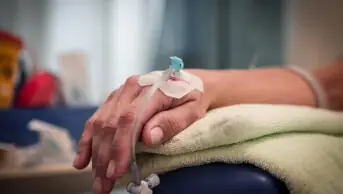Many will be supportive of Boots’s decision to change its method of dispensing for care home residents from monitored dosage system (MDS) to patient pack dispensing (PPD). However, this U-turn prompted me to reflect on my original recommendation to care homes in Derbyshire, during the 1980s, for care homes to switch from PPD to MDS.
As social services pharmacist for Derbyshire Area Health Authority and Derbyshire Social Services Department, I was astonished to discover that care home staff were removing solid dosage forms from containers supplied by pharmacies and administering them from make-shift containers (such as egg and ice trays). Staff were inadvertently introducing an additional step and potential for error to the process.
I recommended that the administration of each dose should be documented, and that medicines should be administered directly from the containers supplied by pharmacies. Research conducted as part of my PhD proved that solid dosage form administration errors were fewer and time taken to complete a medicine round was reduced when using MDS, compared with re-dispensing and with administration direct from traditional containers.
Practicability of safe medicine administration in the context of unavoidable concurrence of social care tasks (such as answering the phone or attending to a fallen resident) was also enhanced by using MDS. Partly based on this research, Boots offered MDS to UK care homes at no extra cost in exchange for receiving residents’ prescriptions.
A senior social care manager at one of these care homes once told me that MDS was a “godsend”, so I agree with Lelly Oboh when she says that the switch back to PPD could result in outcry. There is also a risk that the switch may mean some homes revert to the dangerous practice of re-dispensing.
Guidance from the National Institute for Health and Care Excellence and the Royal Pharmaceutical Society may not sufficiently recognise care home culture, which primarily embraces personal care as opposed to healthcare. Medicines administration in this environment is complex, so care home staff need much more than an online self-study programme on PPD. Personal care in care homes is very demanding and undertaken with minimal staffing resources; for example, one staff member per medicine round. Care workers deserve support from pharmacies that are willing to continue providing MDS.
I don’t think MDS should necessarily become the default system — there will be occasions where care homes are able to safely administer medicines using PPD. Pharmacists should take the lead in reviewing (with care home heads) the type of dispensing system and support that would best help staff to provide excellent personal care. Where MDS is provided, resources should be allocated, through health or social care budgets, to ensure pharmacies are remunerated for the support they provide.
Peter Rivers, retired academic and pharmacist, Derbyshire


